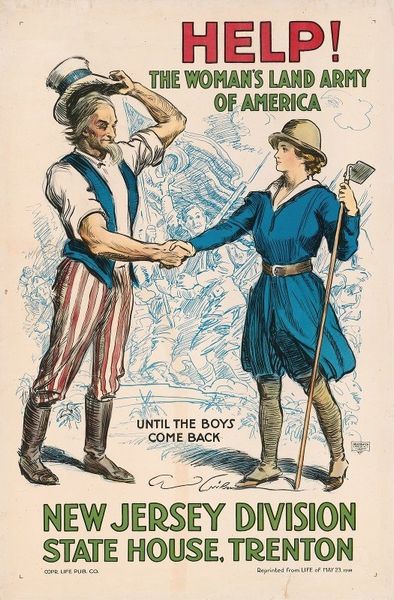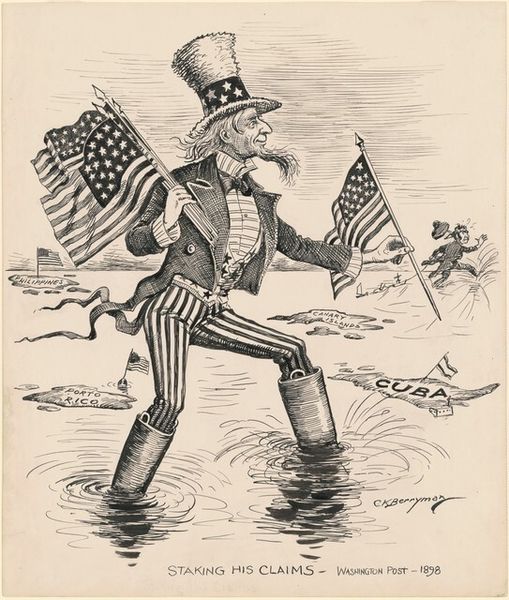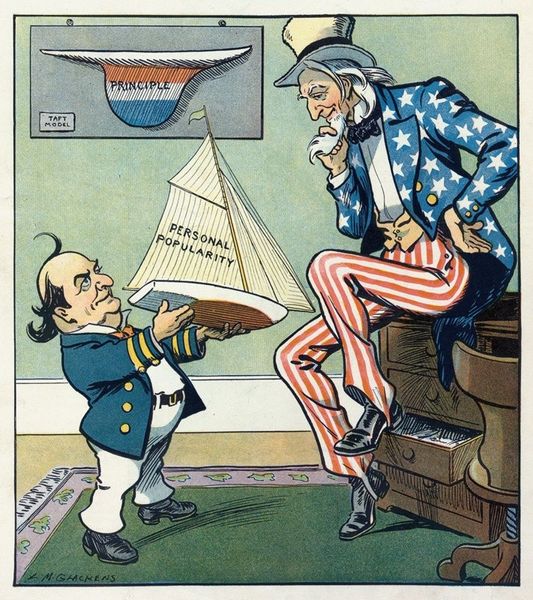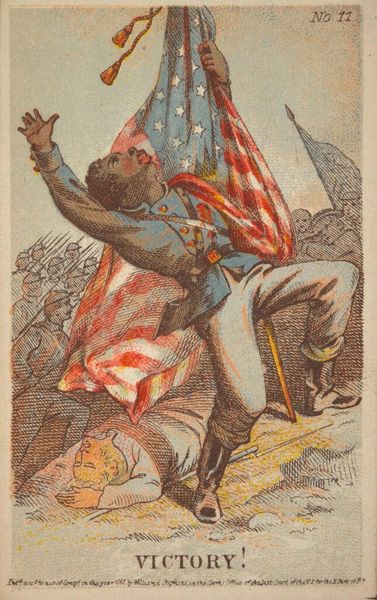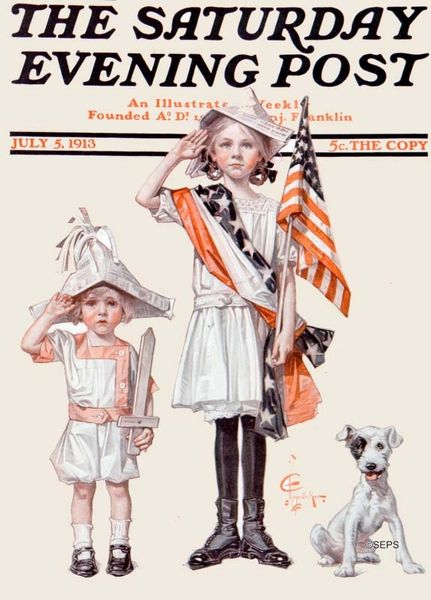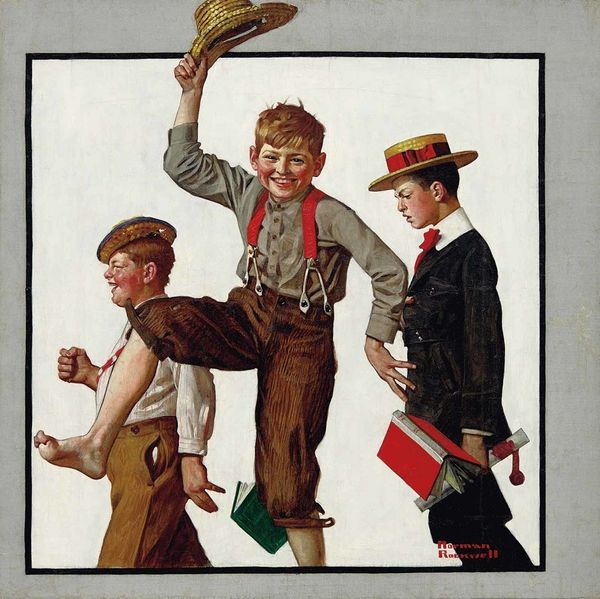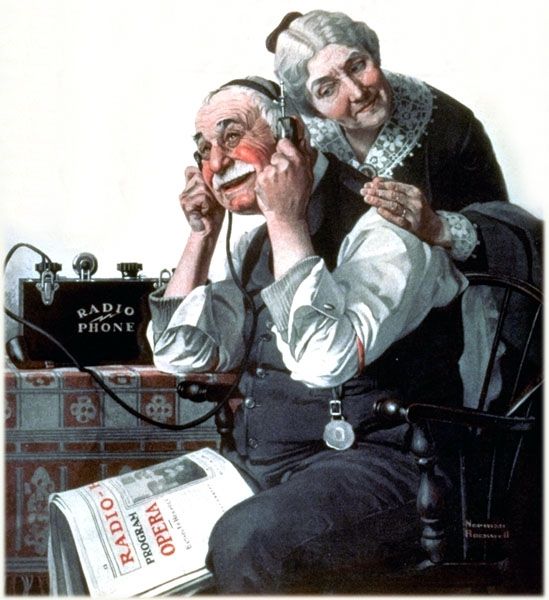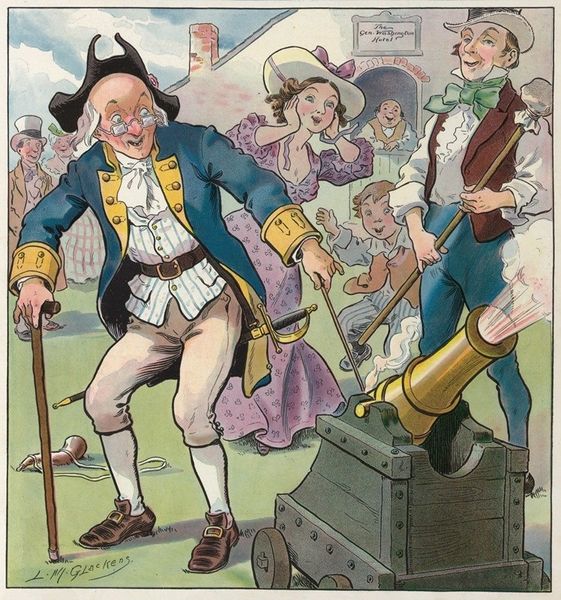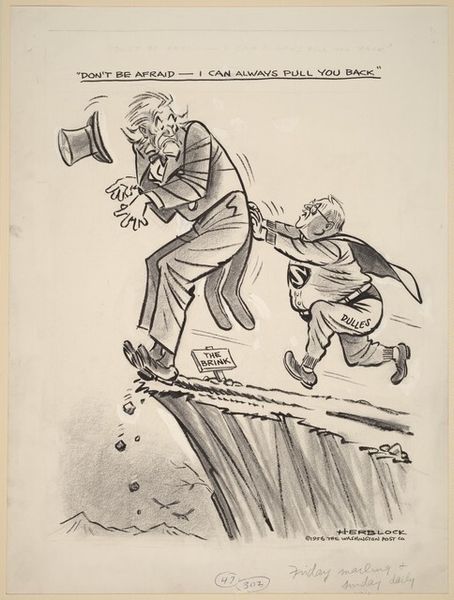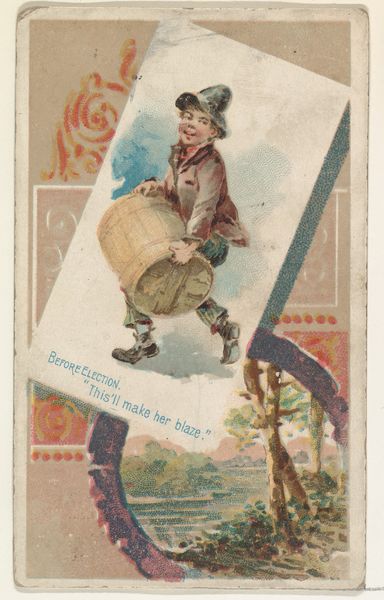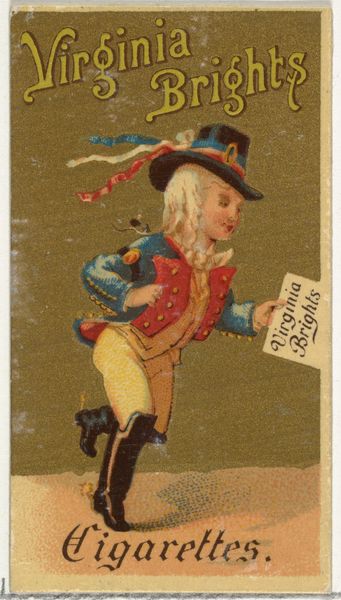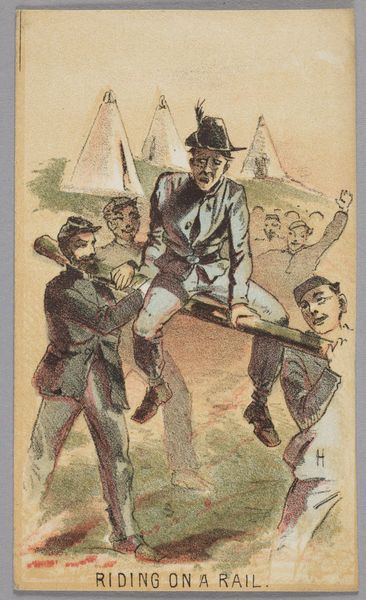
print, photography, poster
#
portrait
# print
#
photography
#
history-painting
#
academic-art
#
poster
#
modernism
Copyright: Public Domain: Artvee
Editor: This is "U.S. Navy—Here he is, sir," a poster created around 1914. It features Uncle Sam presenting a young man to presumably a naval officer; there’s almost a feeling of handing him off. What do you make of this image, especially considering the poster medium itself? Curator: What I see immediately is the strategic deployment of image as labor. This isn't just aesthetic representation, but a *call* to produce manpower. The poster’s medium—cheap, reproducible, mass-produced—makes it directly entangled with wartime industrial demands. Consider the actual work involved: from the artist designing the image for the purpose of Navy recruitment, the industrial processes required to print the poster and distribute across multiple spaces. It's pure utilitarian design that fuels recruitment by manufacturing consent. What stories do these figures tell about the labour involved, from those depicted within the frame to those who made this frame possible? Editor: So it’s less about the artistic skill and more about… how it gets people to join the Navy? I guess the medium IS the message. Curator: Exactly. How is patriotism packaged, consumed, and produced? Note that the artist, Charles Dana Gibson, isn't toiling in obscurity; he's a successful illustrator and owner of *Life* magazine, suggesting a pre-existing ideological position invested within systems of power. So, how are cultural values and propaganda essentially 'produced' in response to socio-political exigencies like war and national loyalty. Editor: This makes me think about how much labor went into not just fighting the war, but convincing people *to* fight it! Curator: Precisely. Each poster represents untold work hours. It prompts us to inquire - were resources to print such posters scarce at this time? Where the industrial materials to print and disperse posters diverted away from others. Consider the use of print itself. Who were it's targets. It opens many threads if approached via the industrial process that renders recruitment as something made, materialised and tangible, not an arbitrary choice. Editor: I never really thought about a poster like this as having a relationship to factories or manpower, but I can definitely see it now! Curator: It's about shifting the focus to the actual processes involved. We have moved far beyond a simplistic view of art. I find that insightful.
Comments
No comments
Be the first to comment and join the conversation on the ultimate creative platform.
